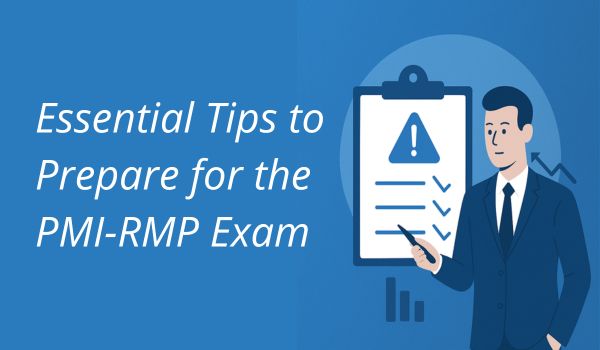What is a Risk Management Strategy?
A risk management strategy is a structured and systematic approach to identifying, assessing, and mitigating risks that could potentially impact an organization’s ability to achieve its objectives. It involves a series of processes designed to understand the nature of risks, evaluate their potential impact, and develop plans to manage or eliminate them. This strategy ensures that an organization can anticipate uncertainties, reduce potential losses, and capitalize on opportunities.
Why a Risk Management Strategy is Important?
A risk management strategy is vital for any organization aiming to achieve its objectives while navigating the uncertainties of the business environment. Here are several key reasons why implementing a risk management strategy is crucial:
- Proactive Risk Identification: By identifying risks early, organizations can take steps to mitigate or avoid them before they become significant issues.
- Enhanced Decision Making: A well-structured risk management strategy provides valuable information that aids in making informed decisions, ensuring that risks are considered in all strategic planning and operational activities.
- Improved Organizational Resilience: Organizations with robust risk management strategies can quickly adapt to changes and recover from setbacks, ensuring business continuity.
- Regulatory Compliance: Many industries are subject to regulations that require formal risk management processes. Having a strategy in place helps organizations comply with these regulations, avoiding legal penalties.
- Protection of Assets and Reputation: Effective risk management protects an organization’s assets, including its financial health, intellectual property, and reputation, from potential threats.
Risk Management Strategy Roles
Implementing an effective risk management strategy requires the collaboration of various roles within an organization. Each role plays a crucial part in identifying, assessing, and mitigating risks to ensure the organization can achieve its objectives. Here are the key roles involved in a risk management strategy:
- Ensure controls are functioning effectively.
- Develop training programs to enhance risk awareness and response capabilities.
- Assess the potential financial impact of risks.
- Communicate organizational risk policies and procedures.
- Conduct audits of risk policies and compliance.
- Create business continuity plans to mitigate risks.
- Develop methods to identify and analyze risks and their impacts.
- Establish acceptable risk levels.
- Evaluate the handling of past risks.
- Explain risk factors and potential impacts to stakeholders.
- Maintain records of risk management strategies and outcomes.
- Assess current and potential risks.
- Prepare budgets for risk management.
- Provide research, risk models, and analytical support.
- Types of Risk Management Strategies
Risk management is a crucial aspect of any organization’s operations, ensuring that potential threats are identified, assessed, and mitigated effectively. Various strategies can be employed to manage risks, each suited to different types of risks and organizational needs. Here are some common risk management strategies:
- Avoidance: Risk avoidance involves taking actions to completely eliminate a threat or its potential impact. This strategy is often used when the risk is deemed too high and the potential negative impact too significant. For example, a company might choose not to enter a volatile market to avoid financial loss.
- Reduction: Risk reduction focuses on minimizing the likelihood and impact of risks. This can be achieved through various measures such as implementing safety protocols, investing in technology upgrades, or conducting regular training programs. For instance, a manufacturing plant might install advanced machinery to reduce the risk of workplace accidents.
- Transfer: Transferring risk involves shifting the burden of potential loss to another party. This is typically done through insurance policies, contracts, or outsourcing. For example, a business might purchase liability insurance to transfer the financial risk associated with potential lawsuits.
- Acceptance: Risk acceptance acknowledges that some risks are inevitable and decides to accept them without taking any specific action. This strategy is used when the cost of mitigating the risk outweighs the benefits or when the risk is considered minor. For example, a company may accept the risk of minor supply chain disruptions if the cost of creating a backup system is too high.
- Diversification: Diversification spreads risk across different areas to reduce the impact of any single risk. This is commonly used in investment strategies, where a portfolio is diversified across various asset classes to mitigate market volatility. Businesses can also diversify their product lines or geographic markets to protect against localized risks.
- Retention: Risk retention involves setting aside resources to cover potential losses. This strategy is often used for risks that are too costly to insure or mitigate but are manageable if they occur. For example, a company might establish a reserve fund to cover unexpected operational expenses.
- Mitigation: Mitigation strategies aim to reduce the severity of the impact should a risk materialize. This can include contingency planning, creating emergency response plans, or developing recovery strategies. For instance, an IT firm might implement a disaster recovery plan to ensure data integrity in case of a cyber-attack.
- Monitoring and Review: Continuous monitoring and review of risk management processes ensure that strategies remain effective and relevant. This involves regularly updating risk assessments, reviewing the effectiveness of mitigation measures, and making adjustments as necessary. For example, a financial institution might conduct quarterly reviews of its risk management framework to adapt to changing market conditions.
Implementing a Risk Management Strategy
Implementing a risk management strategy is essential for organizations to protect themselves from potential threats and uncertainties. A well-defined strategy not only helps in identifying and assessing risks but also ensures that appropriate measures are in place to mitigate their impact. Here is a step-by-step guide to implementing a risk management strategy effectively:
- Establish the Context: Begin by understanding the internal and external environments in which the organization operates. This includes analyzing the organizational goals, the regulatory landscape, market conditions, and the internal processes. Establishing the context helps in aligning the risk management strategy with the overall objectives of the organization.
- Identify Risks: Conduct a thorough risk identification process to uncover potential threats that could impact the organization. This can be done through brainstorming sessions, SWOT analysis (Strengths, Weaknesses, Opportunities, Threats), surveys, and reviewing historical data. The aim is to create a comprehensive list of risks that need to be managed.
- Assess Risks: Evaluate the identified risks to determine their likelihood and potential impact. This assessment can be qualitative, using scales like high, medium, and low, or quantitative, using numerical values and statistical models. Risk assessment helps in prioritizing risks based on their severity and the need for action.
- Develop Risk Mitigation Strategies: For each significant risk, develop specific mitigation strategies. These can include risk avoidance, reduction, transfer, acceptance, and retention. The choice of strategy will depend on the nature of the risk and the organization’s risk tolerance. For example, high-impact risks might be avoided or transferred, while low-impact risks might be accepted or mitigated through minor adjustments.
- Create an Action Plan: Develop a detailed action plan outlining the steps needed to implement the chosen risk mitigation strategies. This plan should include timelines, responsible parties, resource requirements, and specific actions to be taken. Ensure that the action plan is realistic and achievable within the given constraints.
- Implement the Plan: Execute the risk management action plan. This involves allocating the necessary resources, communicating the plan to all stakeholders, and ensuring that everyone understands their roles and responsibilities. Effective communication and coordination are crucial during the implementation phase to ensure that the plan is followed correctly.
- Monitor and Review: Continuously monitor the implementation of the risk management strategy and the effectiveness of the mitigation measures. Regularly review the risk landscape to identify any new or evolving risks. This ongoing process ensures that the strategy remains relevant and effective in addressing current and future risks.
- Report and Communicate: Maintain clear and transparent communication with stakeholders about the status of risk management activities. Regular reporting helps in keeping everyone informed about the progress, challenges, and outcomes of the risk management efforts. It also fosters a risk-aware culture within the organization.
- Evaluate and Improve: Periodically evaluate the overall effectiveness of the risk management strategy. Gather feedback from stakeholders, analyze the outcomes, and identify areas for improvement. Continuous improvement is essential to adapt to changing conditions and enhance the organization’s resilience to risks.
A comprehensive risk management strategy is vital for organizations to navigate uncertainties and protect their assets. By identifying, assessing, and mitigating risks, organizations can enhance their resilience, improve decision-making, and ensure long-term success. Training programs, including PMI-RMP Certification training, play a significant role in equipping professionals with the necessary expertise to manage risks effectively. Through a structured approach to risk management, organizations can achieve their objectives while minimizing potential losses.




